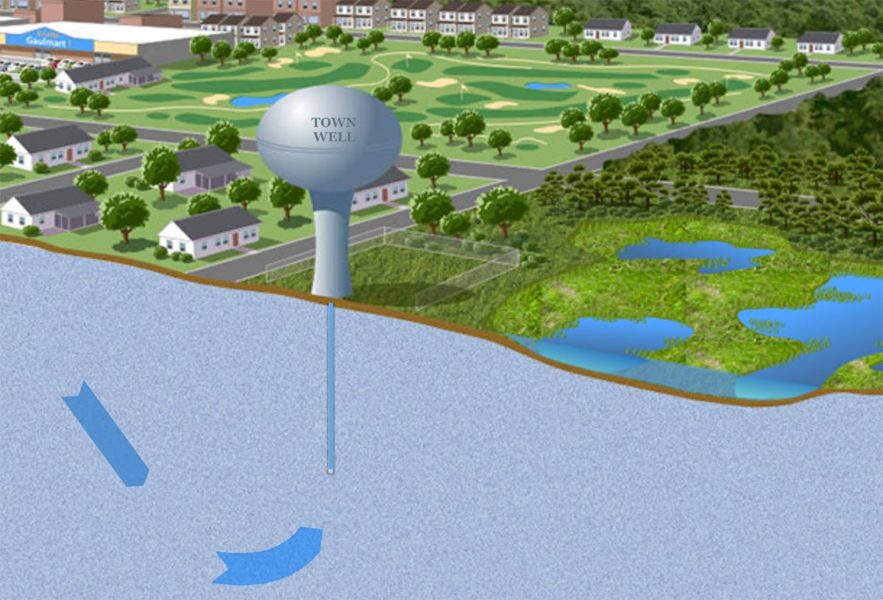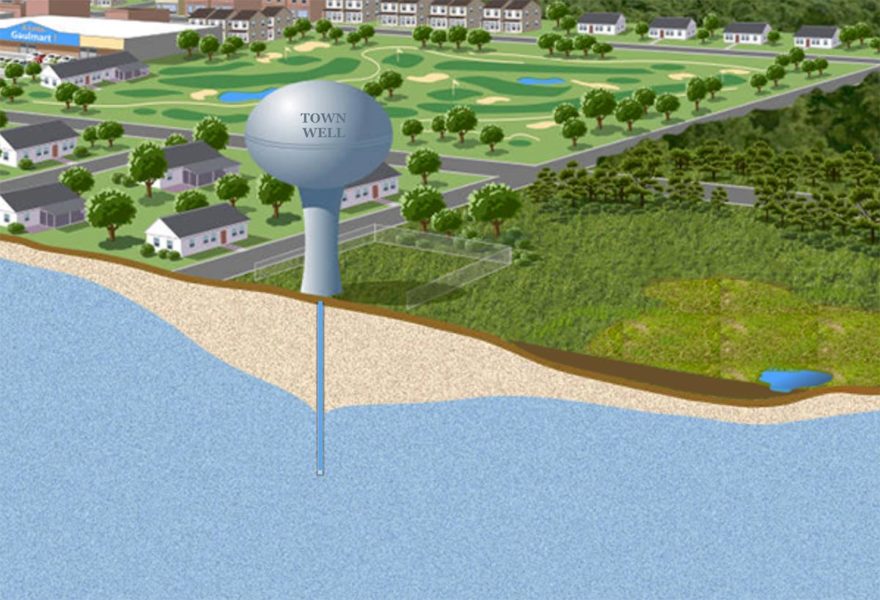Water Waste
Overuse of water is the greatest threat to the Kirkwood-Cohansey aquifer.
Threats From Groundwater Withdrawals
On a regional basis rainwater that reaches the shallow aquifer moves underground toward a nearby surface water body. In the Pinelands, groundwater discharge accounts for more than 90 percent of streamflow. Water withdrawn from the Kirkwood-Cohansey aquifer by wells can drastically reduce the amount of water available to feed streams and wetlands.
Well water is used for a variety of reasons. Municipalities provide well water to their residents, farmers use well water to irrigate their crops and golf courses use well water to keep their turf green. Most or all of this water is lost to the groundwater system after it is used. For example most water used in agriculture, except for drip-irrigation is lost to the atmosphere.
Aquifer Drawdown


On a local level, water withdrawals from high-capacity wells can have profound impacts on the environment. Wells lower the water table in the areas of the well. The more water that is pumped from a well, the larger the area that is impacted. Depending on the local geologic properties of the aquifer, wells can lower the water table and associated wetlands for thousands of feet in all directions around a well. If the rate of pumping is high enough, streams within the influence of the well can dry up in a short period of time. This is particularly true in September when streams are typically at their lowest. It is estimated that there are over 1,000 high-capacity wells in the Kirkwood-Cohansey aquifer, with yields up to 4,5000 gallons per minute.
